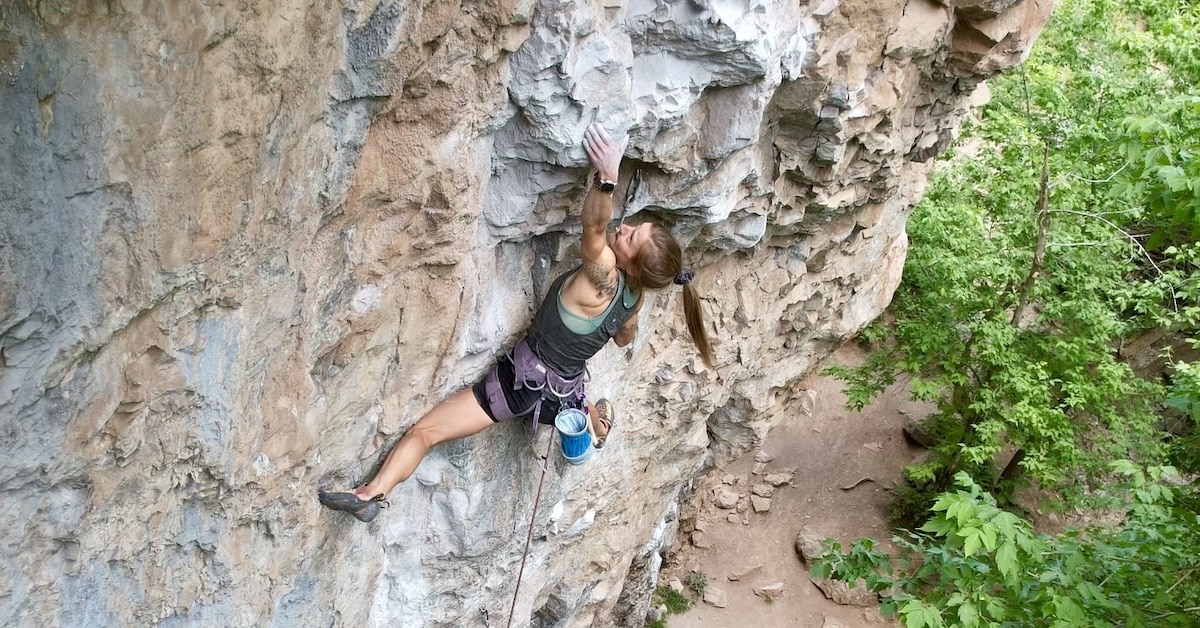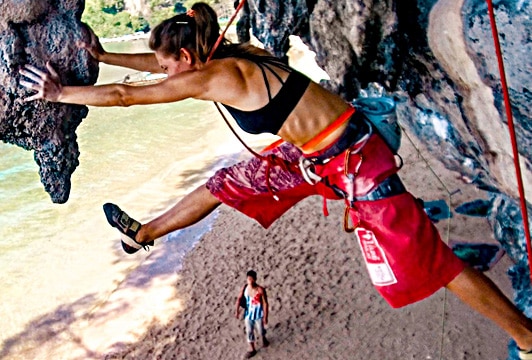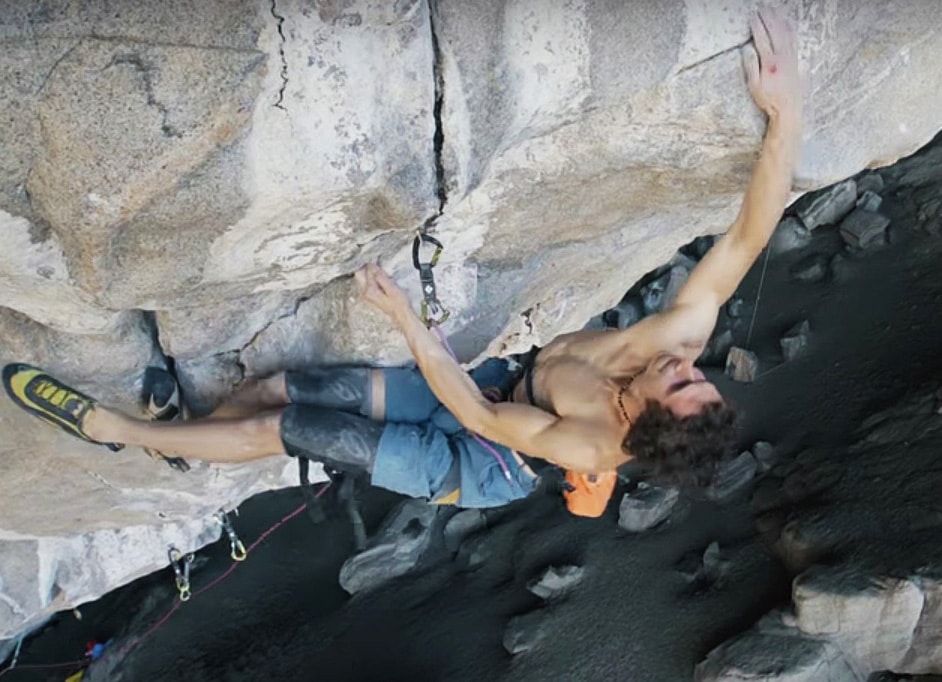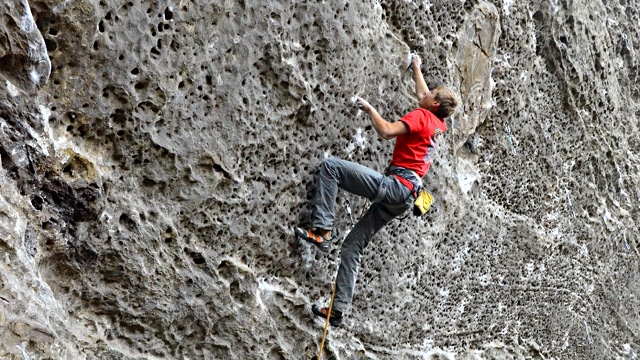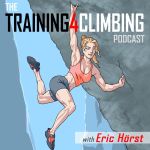Even when your body knows what to do, your mind needs to be in the right place to climb your best. Learn the importance of optimizing your state by finding the route-specific arousal “sweet spot” to best support your efforts to send!
No two climbs are the same. That’s the beauty and the curse of this sport; no matter what training you undergo, you’ll always have to make special adjustments based on the climb in front of you. A well-rounded training program will prepare you for most quirks you encounter on the wall, but you’ll still need to sift through your toolbox for the right methods to fit each unique climb.
Similarly, no two climbers are the same. Some perform better with loud support from an enthusiastic audience while others prefer to climb in complete silence so that their own train of thought can run the show. Some gravitate towards burly overhangs and others pump out their calves more than their forearms on technical terrain. Some need to calm themselves down to keep from making sloppy mistakes and others work to psych themselves up from a mellow baseline.
Arousal Levels
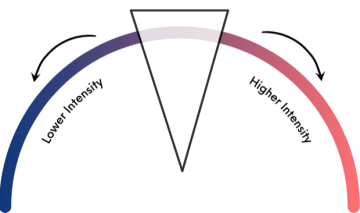
Your ideal level of arousal lies on a spectrum from low to high intensity, and varies from situation to situation.
Think of every climb and climber as a point on a spectrum from low to high levels of arousal (or excitability). Identifying the skillset and mindset combination means pinpointing the spot on that spectrum where all these factors align.
That means that there’s no one right way to approach a climb in terms of the energy you bring to the table. Different climbers will need different methods in order to perform well on the exact same climb. The same climber will need to switch up their tactics from one climb to the next. Even repeated attempts by the same climber on the same climb might warrant different levels of arousal each time, depending on how the day has gone so far or who else is in the vicinity.
To land on the ideal amount of energy for you to put up your best fight, start by breaking down the equation into three components: you, the climb, and the environment.
Who Are You?
Consider how you respond under stressful circumstances. Do you spring into action, taking charge of the situation and thriving in the urgency? Do you take a step back to think it all through before putting anything into motion? Or do you lose control of your thoughts and actions completely in the midst of chaos?
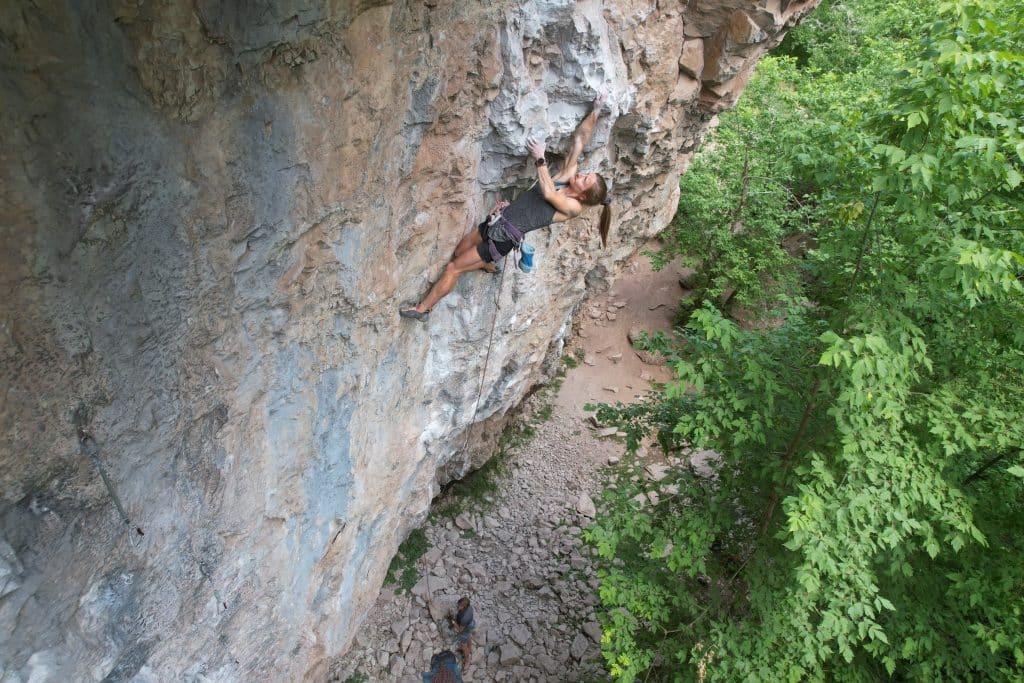
Do you perform better under stress when amped up or chilled out? Image courtesy of Charlie Postlewaite.
There’s no wrong answer, just different ways of navigating stress. And at the end of the day, no matter how much we enjoy it, climbing is still a stressful activity. That’s especially true when passion and emotion come into play for climbers that throw every ounce of themselves into it.
If you’re the type to dive right into the disorder without batting an eye, then you likely perform better at an elevated arousal state. If you’re one to seek out a quiet place to reflect first or get the urge to run away from it all entirely, then your best performances probably happen at lower levels of energetic arousal.
What Are You Climbing?
Techy and delicate climbs will naturally require a more tranquil state of mind than their steep and powerful counterparts. And while climbs often have an overall theme, they might also vary from crux to crux and section to section. Read the entire route first. Take note of aspects like angle, length, hold size, reach distances, rest opportunities, and specific sequences to determine what kind of attitude the climb demands of you.
Where Are You?
The same crag can feel completely different on a quiet Tuesday morning compared to a busy Saturday afternoon. If the area’s already abuzz with external energy, you likely don’t need to add more internally.
On the other hand, if it’s so quiet that the stillness feels suffocating, you’ll need to light your own fire. Weather patterns can also change the energy of the environment. Climbing in the rain, in the dead of winter, or in 90 degree heat will take a bit more gusto than on a crisp fall day.
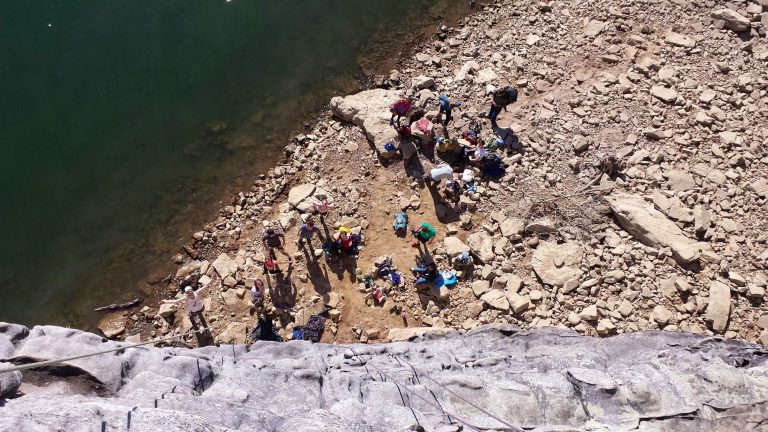
The atmosphere around you, from the people to the weather, affects what kind of energy you need to summon.
Find the Balance
Equalize all three factors. Each one will pull your ideal energetic state in a different direction. If you perform better in a relaxed state, you’re hopping on a technical slab, and there’s a surrounding crowd that you need to tune out, then the answer’s pretty simple: focus on lowering your level of arousal before starting to climb.
If you perform best when you’re chomping at the bit, you’re gearing up for a short-and-sweet boulder problem out the mouth of a steep cave, and the air around you feels a little too still, that’s also an easy one: focus on amping yourself up as you get ready to tackle the challenge.
Most situations, though, will bring you somewhere in the middle. A climber who prefers a calm headspace but wants to attempt a powerful route on a humid midsummer afternoon might have to compromise a bit on inner peace in order to meet the climb halfway.
Once you settle on the energy you need, all that’s left to do is adjust your current state of arousal to match. Read on for tips on how to turn up and down the dial to show up at your best no matter where the sweet spot lies.
Takeaways:
- Consider what kind of arousal level makes you feel most focused, confident, and in control. Give this a rating from 1 to 10 along the spectrum from low to high intensity.
- Determine what the climb is asking of you and what level of excitability would best fit the style of climb. Give this a rating from 1 to 10.
- Think about how your surroundings and environment play into the climb. Give this a rating from 1 to 10.
- Find the average of these three factors together to decide on the level of arousal you need for the climb at hand.
- Fine tune your current state to match your ideal state with tips on relaxation and amplification.
Related Articles
- 10 Mental Strategies to Improve Performance…In Climbing and Beyond!
- Increasing Self-Awareness in the Pursuit of Excellence
- 10 Tips for Pursuing Maximum Climbing Performance
- Overcoming the Fear of Failure
- 5 Strategies to Sharpen Your Concentration and Climb Better!
Copyright © 2022 Lucie Hanes & Hörst Training LLC | All Rights Reserved.

